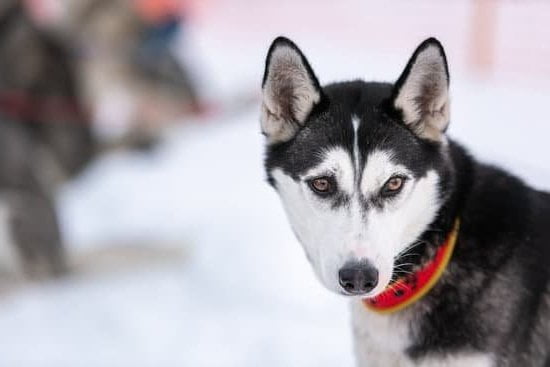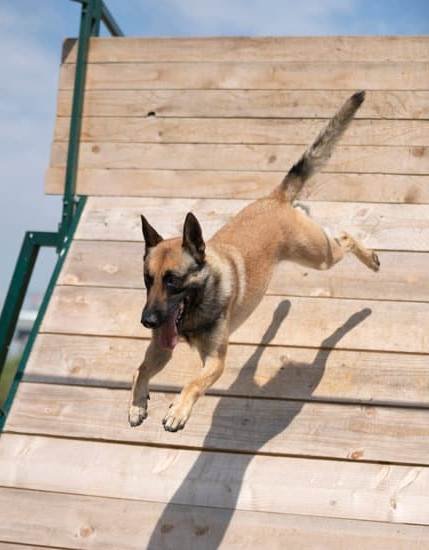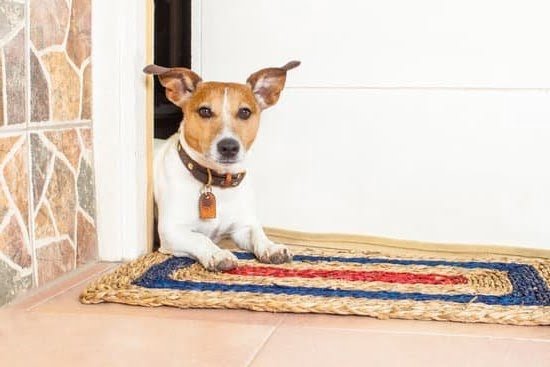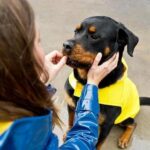Are you wondering how to spot train a dog? Spot training is a valuable technique for dog owners that allows them to focus on teaching specific behaviors in designated areas. In this article, we will explore the concept of spot training and its benefits for dog owners. Whether you are a new pet parent or looking to refine your dog’s training, understanding spot training can be an effective tool in shaping your furry friend’s behavior.
Spot training involves teaching your dog specific commands or behaviors in a defined location, such as sitting at a particular spot or staying within boundaries. This targeted approach helps reinforce desired actions and establish consistency in your dog’s obedience. By incorporating spot training into your routine, you can effectively address specific areas of improvement and enhance your dog’s overall training experience.
In the following sections, we will delve into the principles and techniques of spot training for dogs, including tips for choosing the right location, teaching essential commands, utilizing positive reinforcement, and maintaining consistency. Additionally, we will address common mistakes to avoid and provide problem-solving strategies for overcoming challenges that may arise during the spot training process.
Ultimately, our goal is to empower dog owners with the knowledge and tools needed to successfully spot train their furry companions for long-term success.
What Is Spot Training
Spot training is a valuable technique for dog owners to teach their pets to stay in a designated area or “spot” on command. This skill not only enhances obedience but also promotes safety and control, especially in situations where a dog needs to remain still and obedient. The principles of spot training involve teaching the dog to stay in one place until given permission to move, providing the owner with greater flexibility and peace of mind.
To start spot training your dog, it’s essential to choose the right location for this activity. The spot should be comfortable, safe, and free from distractions that could cause the dog to lose focus. It’s also important that the spot is easily visible and accessible for both the owner and the dog. Common choices include a crate, mat, or specific area in the home or yard.
The key techniques for spot training include using clear and consistent commands, positive reinforcement, and patience. Dogs respond well to routine and consistency, so it’s crucial to establish a clear verbal command or hand signal when instructing your dog to stay in their spot.
Positive reinforcement with treats or praise will encourage your pet to adhere to these commands. Patience is also essential, as this type of training may take time depending on your dog’s personality and learning style.
Choosing the Right Spot
Spot training a dog can be an effective method for teaching specific behaviors and commands in designated areas. When choosing the right spot for spot training your dog, there are several factors to consider to ensure success and minimize distractions. The ideal spot should be quiet, free from excessive noise or foot traffic, and comfortable for both you and your dog. This will help create a focused environment where your dog can learn and practice new commands without unnecessary interruptions.
Another important aspect to consider when selecting the right spot for spot training is the potential for consistency. It’s essential to choose a location that can be easily accessible and utilized on a regular basis. This consistency helps reinforce the connection between the designated area and the specific behaviors or commands being taught, making it easier for your dog to understand and remember what is expected of them in that particular spot.
When choosing the right spot for spot training, it’s also crucial to take into account the specific needs and preferences of your dog. Some dogs may feel more comfortable in certain areas of the house or yard, while others may have different levels of sensitivity to environmental factors. By observing your dog’s behavior and responses in different locations, you can determine which spot is most suitable for their individual personality and learning style.
Ultimately, selecting the best location for spot training your dog requires thoughtful consideration of both practical and behavioral aspects. By choosing a quiet, consistent, comfortable spot that aligns with your dog’s preferences, you can create an optimal environment for successful spot training. Understanding how to spot train a dog effectively involves not only teaching commands but also creating an ideal setting where learning can take place with minimal distractions.
Basic Commands
Spot training a dog involves teaching them to perform specific behaviors in designated areas, which is not only convenient but also essential for their safety and well-being. One of the fundamental aspects of spot training is teaching your dog basic commands that will help them understand what is expected of them in the chosen location. Commands such as “stay” and “sit” are crucial for spot training, as they provide the foundation for more advanced behaviors.
Teaching “Stay”
When spot training your dog, the command “stay” is particularly important for keeping them within a certain area or position. To teach your dog to stay, start by having them sit or lie down. Then, give the verbal command “stay” while making a hand signal, such as holding your palm towards them with an open hand.
Gradually increase the duration of the stay before rewarding them with praise and treats. It’s important to practice this command consistently in different environments to solidify their understanding.
Teaching “Sit”
The command “sit” is another essential behavior for spot training, as it encourages your dog to remain calm and obedient in a specific location. To teach your dog to sit, hold a treat close to their nose and then raise your hand, so their head follows the treat and their bottom naturally lowers into a sitting position.
As they sit, immediately reward them with the treat and praise. Repeat this process multiple times throughout each spot training session until they respond reliably to the verbal command “sit”.
By focusing on teaching these essential commands during spot training sessions, you can establish a strong foundation for further behavioral development. Consistency in practicing these commands and patience in reinforcing positive behavior will ultimately lead to successful spot training for both you and your furry companion. Remember that every dog learns at its own pace, so be patient and enjoy the process of bonding with your pet through spot training exercises.
Positive Reinforcement
The key to successful spot training using positive reinforcement is timing and consistency. It’s important to immediately reward your dog when they comply with your command or stay in the designated spot. This helps reinforce the connection between the action and the reward, increasing the likelihood of them repeating the behavior in the future. Consistency is also essential – ensure that everyone in the household follows the same reward system and uses consistent cues to avoid confusion for your dog.
One common mistake that dog owners make when it comes to positive reinforcement is over-reliance on treats. While treats can be an effective motivator, relying solely on them may lead to your dog only responding when they know there’s a reward involved.
To avoid this, gradually reduce treats as your dog becomes more consistent with their behavior and incorporate other forms of rewards such as verbal praise or playtime. Ultimately, positive reinforcement creates a strong bond between you and your dog while promoting good behavior during spot training sessions.
Common Mistakes
Spot training a dog can be a highly effective way to address specific behavioral issues and improve obedience in your furry friend. However, it’s important to be aware of the common mistakes that many dog owners make during spot training in order to avoid them and achieve the best results. Here are some of the most common mistakes and how you can avoid them:
- Lack of Consistency: One of the biggest mistakes dog owners make in spot training is inconsistency. It’s important to be consistent with your commands, rewards, and expectations when working with your dog. If you allow your dog to break the rules occasionally, it will only confuse them and make it harder for them to understand what you want.
- Using Negative Reinforcement: Some dog owners may resort to harsh punishment or negative reinforcement when their dog doesn’t respond as desired during spot training. This approach can lead to fear and anxiety in your dog, hindering their progress. Instead, focus on positive reinforcement and rewards for good behavior.
- Not Understanding Your Dog’s Needs: Every dog is unique, so it’s essential to understand your individual pet’s needs and temperament when spot training. For example, some dogs may respond better to food rewards, while others may prefer playtime or affection as a reward.
By being mindful of these common mistakes, you can set yourself up for success in spot training your dog.
Remember that patience and consistency are key when it comes to spot training a dog. By avoiding these common mistakes and staying dedicated to the process, you can effectively teach your furry friend essential commands and behaviors while strengthening your bond with them ultimately leading you up how to spot train a dog successfully.
Orderly practicing these helpful tips on how best way for training gives all pet owners higher chances at spotting trains that would turn out well.
Problem-Solving
Dealing With Distractions
One of the common challenges dog owners face when spot training their furry friends is dealing with distractions. Whether it’s other animals, loud noises, or simply a lack of focus, distractions can make it difficult for dogs to stay obedient in their designated spot. One effective solution to this challenge is gradually introducing distractions during training sessions. Start with minimal distractions and gradually increase the level as your dog becomes more adept at staying focused.
Handling Stubborn Behaviors
Another common challenge in spot training is handling stubborn behaviors exhibited by some dogs. This may include refusing to stay in the designated spot, constantly trying to wander off, or showing signs of restlessness. In such cases, it’s important to revisit the basics of obedience training and reinforce commands such as “stay” and “sit.” Consistency and patience are key in addressing stubborn behaviors, as well as utilizing positive reinforcement techniques to encourage desired behavior.
Establishing Clear Boundaries
One way to overcome common challenges in spot training is by establishing clear boundaries for your dog. This includes setting clear expectations for where your dog should be and when they should remain in their designated spot. By consistently reinforcing these boundaries and maintaining a firm yet gentle approach, you can effectively address challenges related to distractions and stubborn behaviors.
By implementing these strategies and being patient with your furry friend, you can overcome common challenges encountered during spot training. It’s important to remember that each dog is unique, so what works for one may not work for another. Understanding your dog’s individual temperament and tailoring your approach accordingly will contribute to successful spot training.
Consistency Is Key
When it comes to spot training a dog, consistency is absolutely crucial. Dogs thrive on routine and predictability, so it’s essential to be consistent with your training sessions, commands, and rewards. Without consistency, dogs can become confused and may not fully understand what is expected of them.
This can lead to frustration for both the dog and the owner. To ensure long-term success in spot training your dog, make sure to establish a regular training schedule and stick to it.
In addition to consistency, patience is another key factor in spot training a dog. Every dog learns at its own pace, and some may pick up on commands more quickly than others. It’s important for dog owners to remain patient and understanding throughout the spot training process. Avoid becoming frustrated or angry if your dog doesn’t immediately grasp a command or concept. Instead, be patient and continue to work with your dog in a calm and positive manner.
To effectively spot train a dog with consistency and patience, consider the following tips:
- Create a daily training schedule that includes short, frequent sessions
- Use the same verbal commands consistently
- Offer praise and rewards for desired behavior
- Remain patient and avoid punishment or harsh corrections
- Seek professional guidance if you encounter challenges or obstacles
By prioritizing consistency and patience in your spot training efforts, you can set your dog up for long-term success and strengthen the bond between you and your furry companion. Remember that every dog is unique, so be patient as you work together towards achieving successful spot training outcomes.
Conclusion
In conclusion, spot training a dog can be an incredibly rewarding experience for both the pet and the owner. By understanding the concept of spot training, choosing the right location, teaching essential commands, and using positive reinforcement, dog owners can effectively train their pets to behave in specific areas of the home or outdoors. It’s important to remember that consistency is key in this process, as well as patience and a positive attitude.
As dog owners embark on the journey of spot training their furry friends, they may encounter common mistakes and challenges along the way. However, by being aware of these potential obstacles and having solutions at hand, they can navigate through them with ease.
When faced with distractions or stubborn behaviors, it’s essential to remain patient and consistent in applying spot training techniques. By doing so, dog owners can help their pets understand what is expected of them in a particular area.
Ultimately, spot training a dog requires dedication and commitment from the owner. However, the bond between pet and owner will strengthen through this process as they work together to achieve success. With the right knowledge and approach, dog owners can successfully implement spot training techniques and enjoy seeing their pets thrive in designated areas. So go ahead, practice patience and consistency while enjoying the process of spot training your furry friend.
Frequently Asked Questions
How Do You Train a Dog to Go to a Specific Spot?
Training a dog to go to a specific spot involves using positive reinforcement, consistency, and patience. Start by choosing the spot and using a verbal cue or command every time the dog goes there. Reward the dog with treats or praise each time they follow the command, gradually reinforcing the behavior.
How Do I Get My Dog to Pee in a Specific Spot?
Getting your dog to pee in a specific spot requires similar techniques as training them to go to a specific spot. Choose the designated area, use a consistent command, and reward your dog when they use that spot. Take your dog to that spot regularly, especially after meals or naps, to encourage them to use it for peeing.
How Do You Stop a Dog From Peeing and Pooping in the House?
To stop a dog from peeing and pooping in the house, it’s important to establish a routine for potty breaks outside and supervise them closely indoors. Clean any accidents with an enzymatic cleaner to remove odors that may attract the dog back to those spots.
Additionally, consider crate training or using positive reinforcement when your dog eliminates outside to reinforce good behavior.

Welcome to the blog! I am a professional dog trainer and have been working with dogs for many years. In this blog, I will be discussing various topics related to dog training, including tips, tricks, and advice. I hope you find this information helpful and informative. Thanks for reading!





